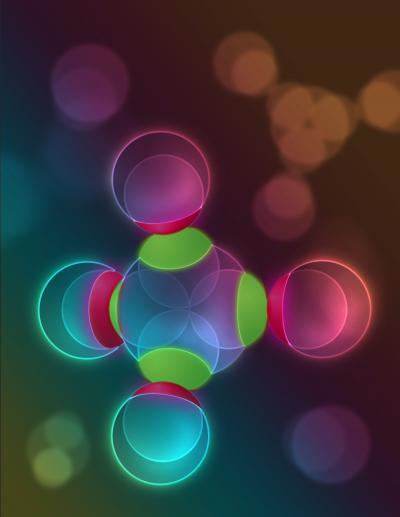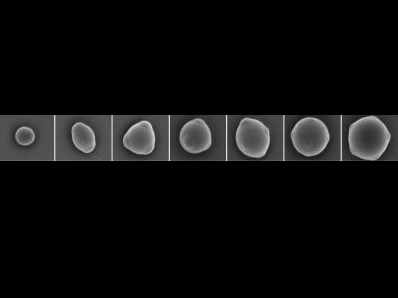Engineered Particles Self-Assemble Like Atoms

Particles engineered to spontaneously self-assemble like atoms forming molecules could give rise to new high-tech materials, leading to better optical displays and faster computer chips, researchers say.
Scientists have crafted the new particles, which are 1/100th the diameter of a human hair, by altering the architecture of colloids, tiny particles suspended in liquids, and which can be found dispersed in everyday items like paint, milk, glass and porcelain. The work is detailed this week in the journal Nature.
Engineers have been limited in their ability to manipulate these particles into new patterns that would form the building blocks of new materials because colloids stick to one another randomly; in science speak, they lack directional bonds, or bonds that prefer a specific orientation.
In an accompanying essay in the same issue of Nature, Northwestern University's Matthew Jones and Chad Mirkin describe the predicament of trying to make structures from these particles as "trying to assemble a bookcase from parts covered in glue that stick to each other equally well wherever they touch, regardless of their relative orientations," the material scientists wrote. "You would quickly find the task to be extremely challenging, because the components would keep joining together in haphazard configurations, rather than fitting neatly into their intended positions."
To form new, complex molecular structures, chemists use atoms with directional bonds, which are necessary to control self-assembly and maintain structural integrity.
"Chemists have a whole periodic table of atoms to choose from when they synthesize molecules and crystals," study researcher Vinothan Manoharan, of Harvard, said in a statement. "We wanted to develop a similar 'construction set' for making larger-scale molecules and crystals."
The team created chemically distinct "patches" on the particles' surfaces that could form directional bonds, sticking to other particles in specific patterns to spontaneously form "colloidal molecules" of the researchers' design.
Get the world’s most fascinating discoveries delivered straight to your inbox.
To ensure the patches interacted with other patches in specific ways, the scientists used single strands of DNA to create "sticky ends" to which particle patches adhered, placing up to seven patches on each particle. The scientists say they could manipulate these bonds to create colloids of a specific color, size, chemical function or electrical conductivity. This, in turn, could lead to the production of new materials, such as photonic crystals to improve optical displays and boost the speed of computer chips.
"What this means is we can make particles that attach only at the patches, and then we can program them so only specific kinds of particles attach at those patches," added another researcher involved in the study, David Pine, an NYU physics professor. "This gives us tremendous flexibility to design 3-dimensional structures."
Follow LiveScience on Twitter @livescience. We're also on Facebook & Google+.




